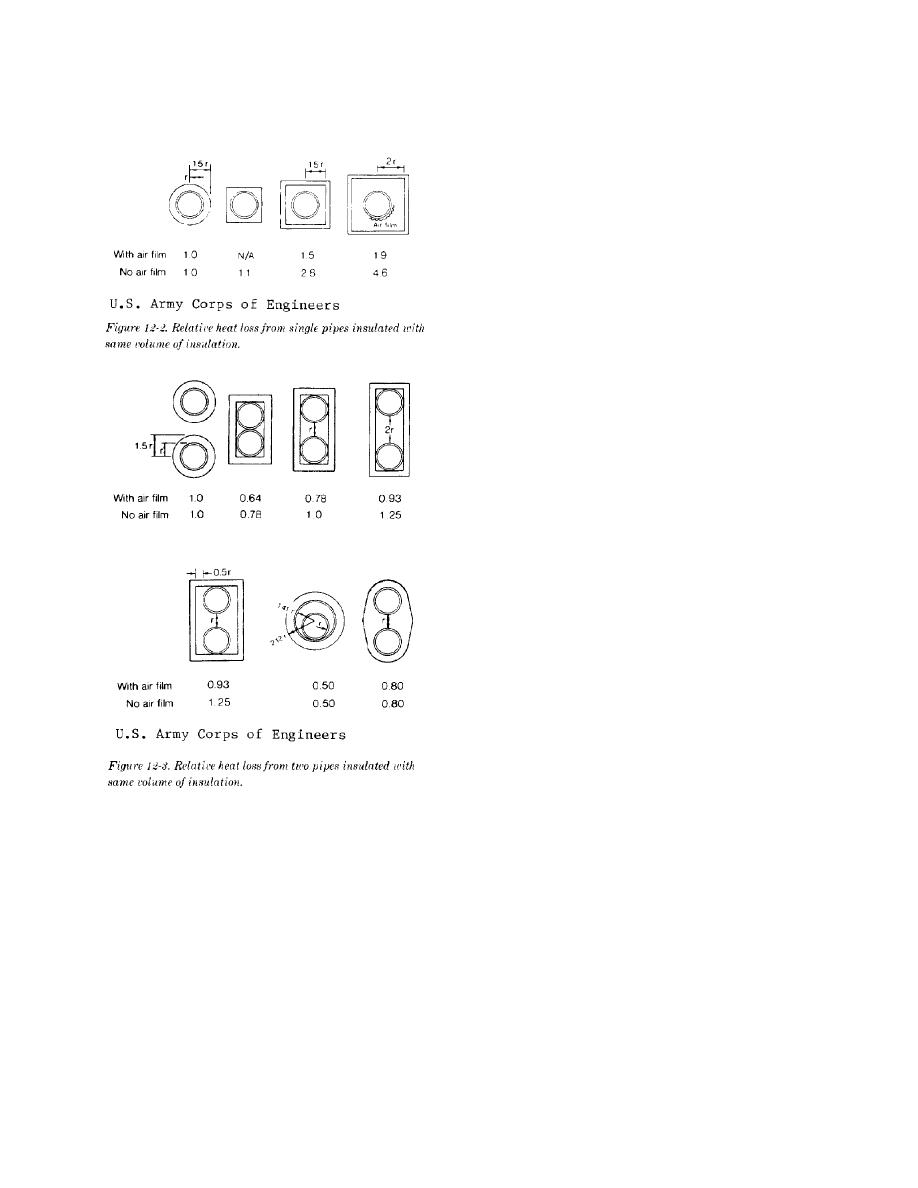
TM 5-852-5/AFR 88-19, Volume 5
lines, or dead ends within a water distribution
of water has been used to maintain or enhance the
system.
flow in service lines, dead ends and intermittent
flowing pipelines, but the wasting of large quantities
of water is inefficient and results in water supply and
wastewater treatment problems. Recirculation will
maintain a flow and a uniform temperature within
the system, and prevent premature freezing at loca-
tions with lower-than-average ambient temperatures
or at poorly insulated sections. However, the water
temperature will still decline unless warmer water is
added or the recirculating water is heated.
b. Point sources of heat. Water may be heated at
the source, treatment plant, pumping stations, or
along the pipeline or within distribution systems as
required. Heat is commonly obtained from oil-fired
boilers; however, simple electric water heaters have
been used where the heat requirements are very low.
The heating of water can be practical with low-
temperature waste heat, such as from electric power
generation. There must also be sufficient flow within
the piping system to distribute the heat. If the
normal water demand is too low or is intermittent,
then bleeding or recirculation is necessary. A
minimum water temperature will be maintained with
the piping system by increasing either the flow rate
or the input water temperature while keeping the
other parameters constant, or by adjusting them
simultaneously. As a general rule, the temperature
drop along a pipeline must always be kept to less
than 10 degrees F, and preferably less than 5
degrees F, by insulation, higher flow rates, or
intermediate heating along the pipeline. Velocities
greater than 0.3 foot per second for 6-inch pipes
and 1.5 feet per second for 2-inch pipes are of little
benefit in reducing total energy input to maintain a
specified minimum water temperature. Higher
velocities must be balanced with the electrical
energy requirements for pumping and are not usu-
ally practical for large diameter mains.
c. Heat tracing. Replacement of heat losses and
12-6. Heat loss replacement.
maintenance of a minimum temperature can also be
accomplished with heat tracing systems. Circulation
If ambient temperatures are below 32 degrees F,
of warm air has been used in large, open utilidors
freezing Will eventually occur in the pipe unless heat
but the most common heat tracing systems are
is added to the fluid. Heat can be added either
either separate fluid or electrical lines as the heat
continuously or at point sources.
source.
a. Fluid replacement. Freezing will not occur if
(1) Fluid tracers. For pipe heat tracing, hot
the liquid residence time in the pipeline is less than
water, generally between 175 and 200 degrees F, is
the time necessary for it to cool to the freezing
much simpler to use than either steam or higher
point. The quantity and temperature of the
temperature water. The use of an antifreeze solution
replacement water must be sufficient and the flow
protects the heat trace piping, allows start-up during
must be reliable. Operation without additional
winter and provides a means of thawing frozen
heating is restricted to situations where relatively
pipes. The viscosity of low freezing point glycol and
warm water supplies, such as ground-water, are
water mixtures is greater than that of water;
used or where the flow rate is reliable and high, such
therefore, the required pumping capacity and
as in some water supply pipelines or mains. Bleeding
friction losses will be higher. The heat transfer
12-3



 Previous Page
Previous Page
